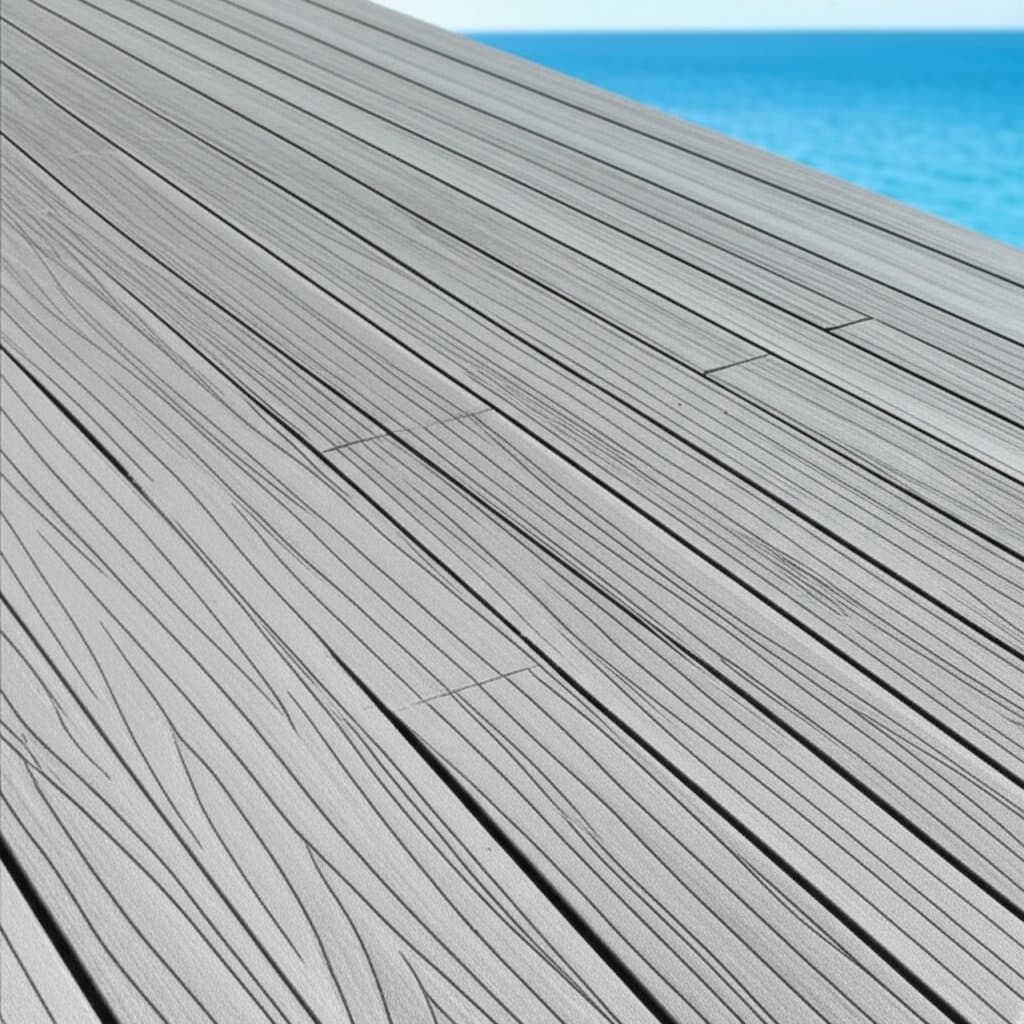7 Reasons Synthetic Decking Outperforms Wood Three-to-One in Coastal Salt Air
Coastal living offers breathtaking views and refreshing breezes, yet these elements pose significant challenges to outdoor structures. Salt-laden air, high humidity, and relentless sunlight accelerate the deterioration of natural wood decks, leading to fading, cracking, and warping much sooner than anticipated. Homeowners often appreciate the aesthetic appeal of wood, but the required ongoing maintenance, including sanding, staining, and sealing, demands considerable time and financial resources.
Synthetic decking provides a robust alternative. Constructed from composite materials that combine recycled plastics with wood fibers, these boards withstand harsh coastal conditions effectively. They repel moisture and resist corrosion, preserving color and structural integrity over extended periods with limited maintenance.
For those evaluating options between wood and composite materials for a new deck installation, consider the following seven advantages that position synthetic decking as superior in salty coastal environments.
Superior Durability and Longevity
1. Resistance to Moisture Damage
Natural wood readily absorbs water, particularly in humid and saline settings, which promotes swelling, cracking, and eventual decay. Synthetic decking, by contrast, features engineered moisture resistance that prevents warping or rotting, even during frequent exposure to sea mist. This design ensures the deck remains stable and functional year after year.
Pro Tip: Select capped composite boards to enhance protection further. The protective outer layer forms a complete barrier against water infiltration.
[Image: Synthetic deck overlooking ocean showing no signs of water damage]
2. Minimal Impact from Salt Air
Salt acts as a powerful corrosive agent on most surfaces, yet synthetic decking's nonporous composition prevents salt penetration and surface degradation. Wood requires repeated applications of sealants or treatments to combat this issue, whereas composite materials maintain integrity with simple rinsing. After exposure to storms or persistent salty winds, a basic wash restores the deck's pristine condition.
Easy Maintenance and Enduring Aesthetics
3. Elimination of Sanding, Staining, and Sealing Requirements
Conventional wood decks demand yearly upkeep to preserve their visual appeal, involving labor-intensive tasks such as power washing, sanding, and applying finishes. Synthetic decking removes these obligations entirely. Routine cleaning with mild soap and a garden hose suffices to remove accumulated dirt, pollen, or salt residue, freeing homeowners for leisure activities.
4. Protection Against Fading and Staining
Intense coastal sunlight combined with salt deposits can cause unprotected wood to discolor and develop unsightly streaks over time. Composite decking incorporates UV-stabilized pigments that safeguard against fading for decades. Spills from sunscreen, beverages, or seawater pose no risk of permanent marks, ensuring consistent beauty.
Pro Tip: Opt for lighter color options to optimize sunlight reflection, which helps keep deck surfaces cooler during hot weather and enhances comfort for users.
[Image: Composite deck with furniture showing clean, even color under bright sun]
Eco-Friendly and Economical Selection
5. Utilization of Sustainable Materials
The majority of synthetic decking products incorporate recycled plastics alongside reclaimed wood fibers, contributing to waste reduction efforts. This approach delivers the visual depth and grain textures reminiscent of natural wood without necessitating additional deforestation. Homeowners benefit from an environmentally responsible choice that aligns with modern sustainability goals.
6. Substantial Long-Term Financial Benefits
Although synthetic decking may involve a higher initial investment compared to pressure-treated lumber, the overall economics favor composites in the long run. Wood decks incur recurring expenses for maintenance, repairs, and full replacements due to accelerated wear in coastal areas. Synthetic options, with their minimal upkeep and extended service life of 25 years or more, yield considerable savings.
- Average installation cost: $8 to $15 per square foot, depending on material quality and labor rates
- Ongoing maintenance expenses: Limited to periodic cleaning supplies, typically under $100 annually for an average-sized deck
Enhanced Performance and User Comfort in Coastal Settings
7. Slip Resistance and Barefoot Comfort
Wet conditions are common on coastal decks, rendering wood surfaces hazardous due to slipperiness. Synthetic decking often includes embossed or grooved textures that ensure reliable traction, even when water is present. Additionally, these materials remain splinter-free throughout their lifespan, providing a smooth and safe experience for barefoot walking, children at play, and pets.
[Image: Family enjoying synthetic deck near beach with safe, slip-resistant surface]
Guidance for Selecting and Installing Composite Decking
To maximize the benefits of synthetic decking in a coastal environment, follow these practical recommendations:
- Choose manufacturers that provide comprehensive warranties covering fade and stain resistance, ideally for 25 years or longer.
- Use stainless steel fasteners exclusively to avoid rust formation in saline conditions.
- Incorporate adequate spacing, typically 1/8 to 1/4 inch, between boards to accommodate thermal expansion and promote airflow for drying.
- Explore hidden fastening systems to achieve a seamless, professional finish without visible screws.
Frequently Asked Questions
Does synthetic decking absorb more heat than wood under direct sunlight?
It may retain slightly more warmth in intense sun, but selecting lighter shades and incorporating shade elements like pergolas effectively mitigates this effect.
Is it possible to install synthetic decking on an existing wooden substructure?
Yes, provided the frame demonstrates structural integrity. Conduct a thorough inspection and replace any compromised or deteriorated joists prior to proceeding.
Maximizing Coastal Deck Enjoyment Through Durable Design
A residence in a coastal location merits an outdoor space that endures the elements while enhancing daily living. Synthetic decking achieves this through its blend of aesthetic appeal, resilience, and environmental consideration. By minimizing maintenance demands and extending usability, it allows residents to focus on savoring seaside moments rather than managing repairs.

